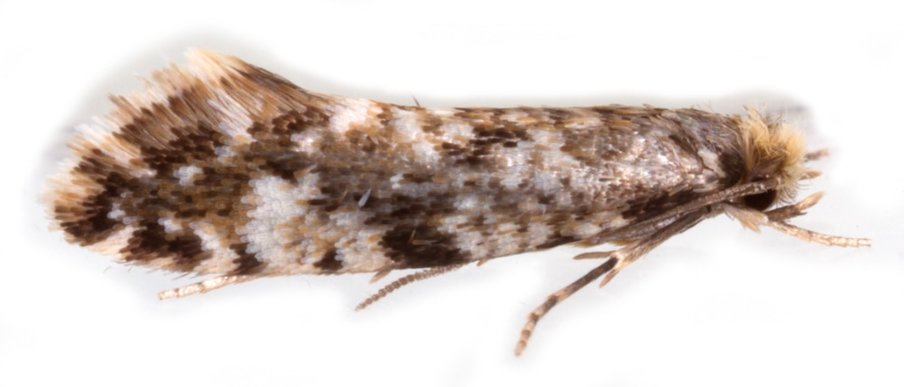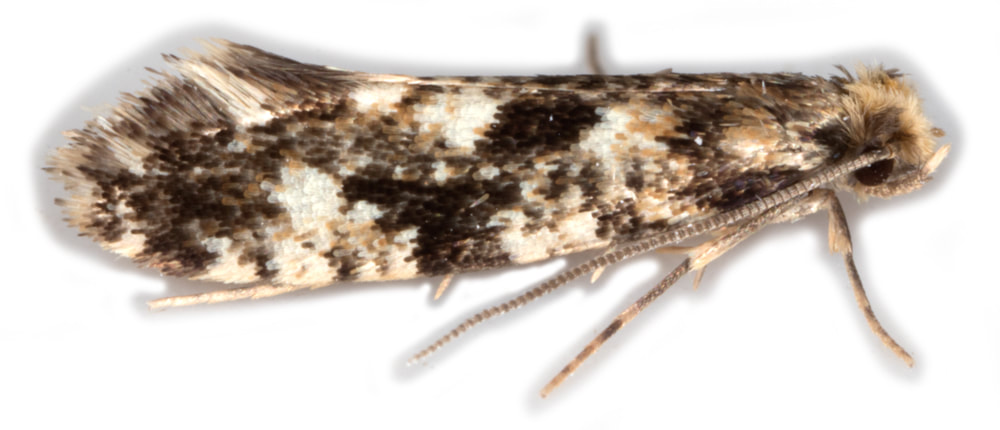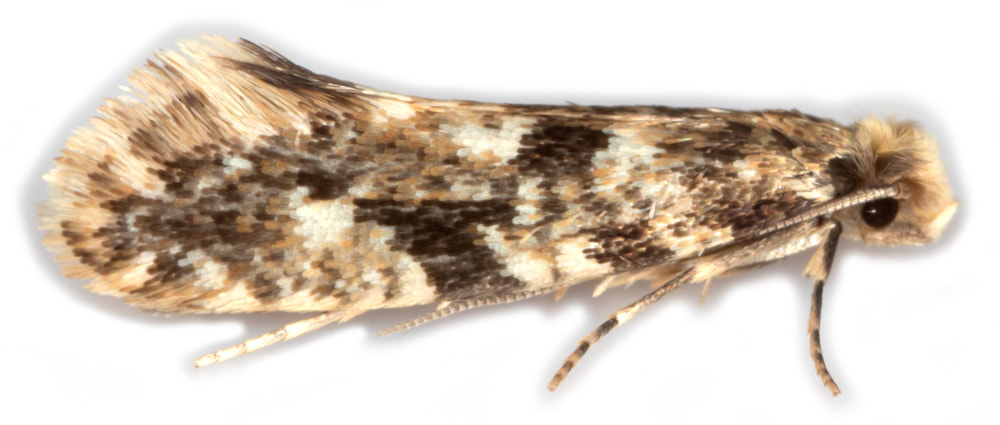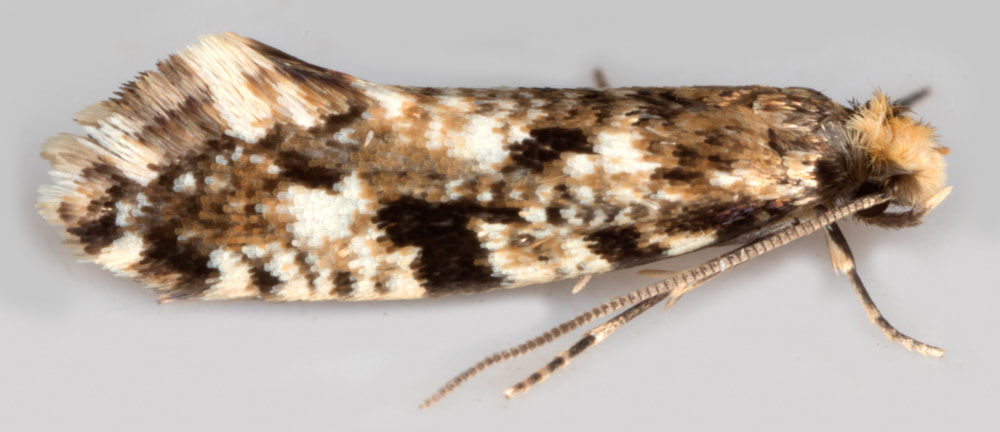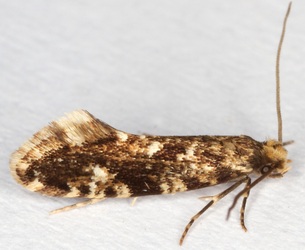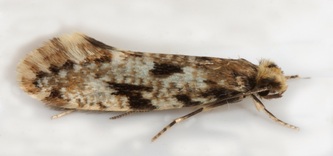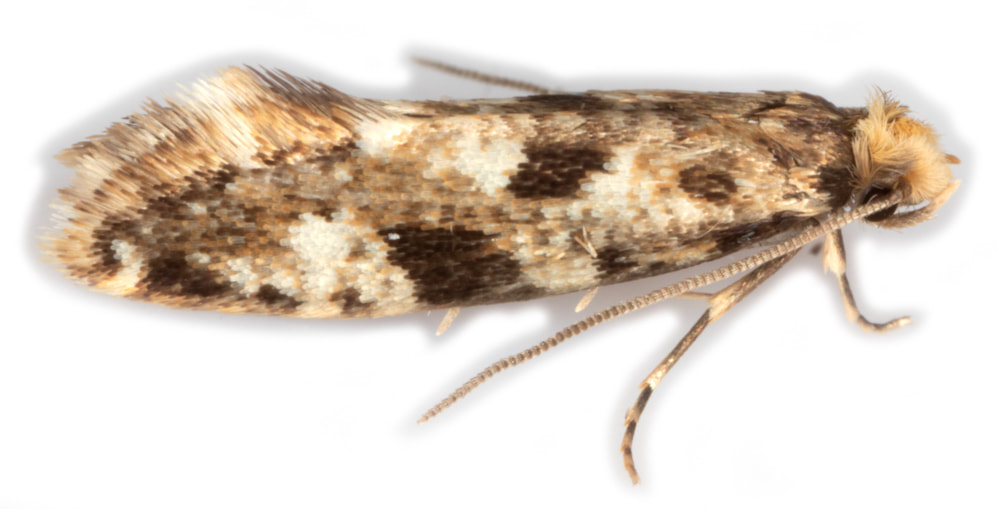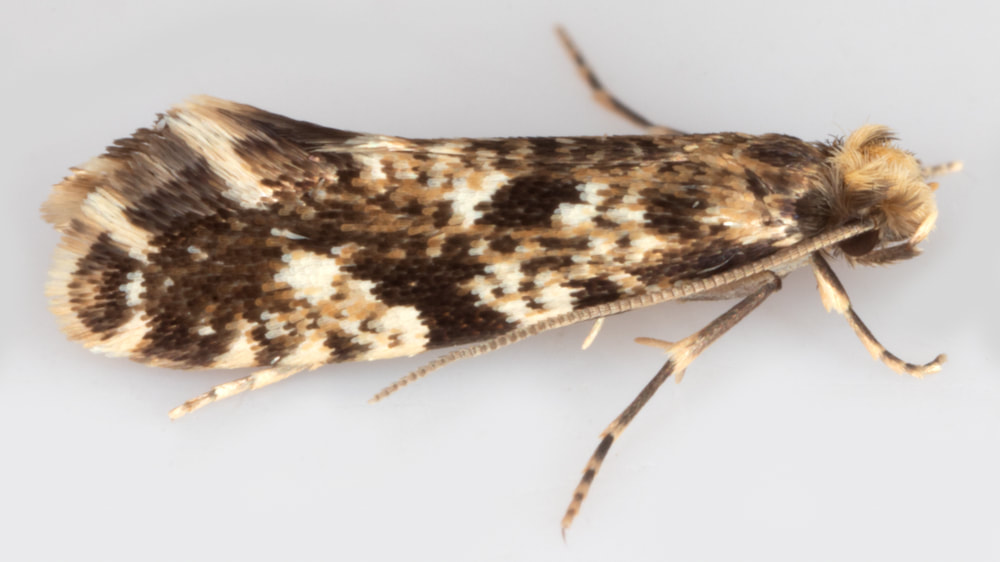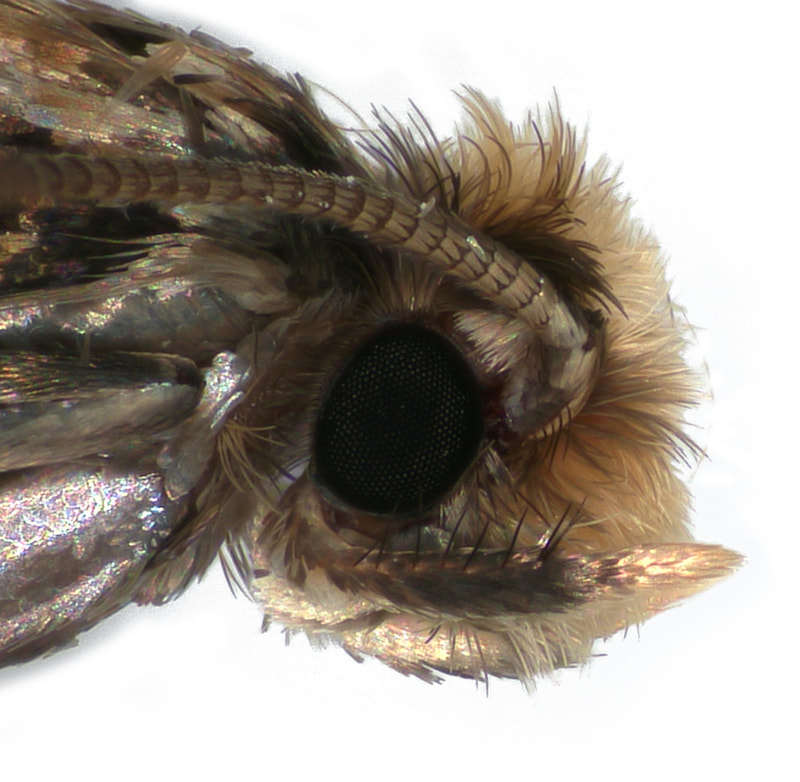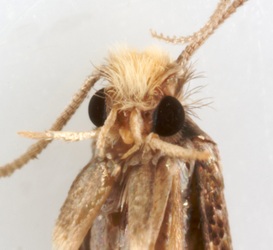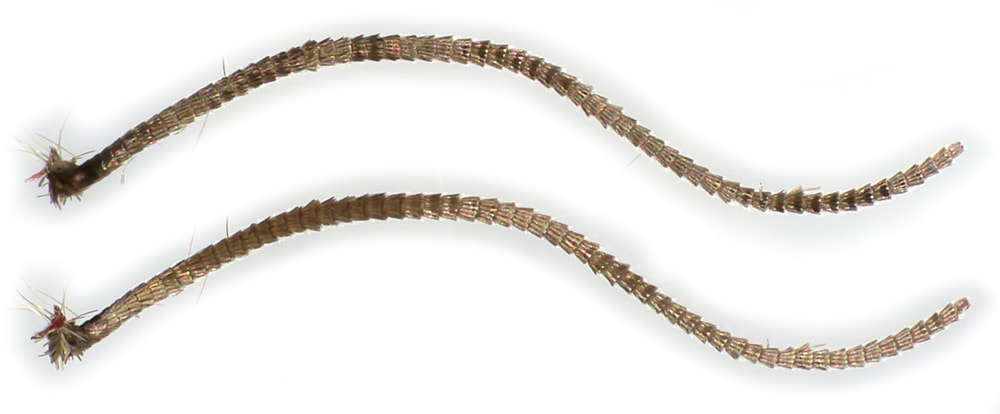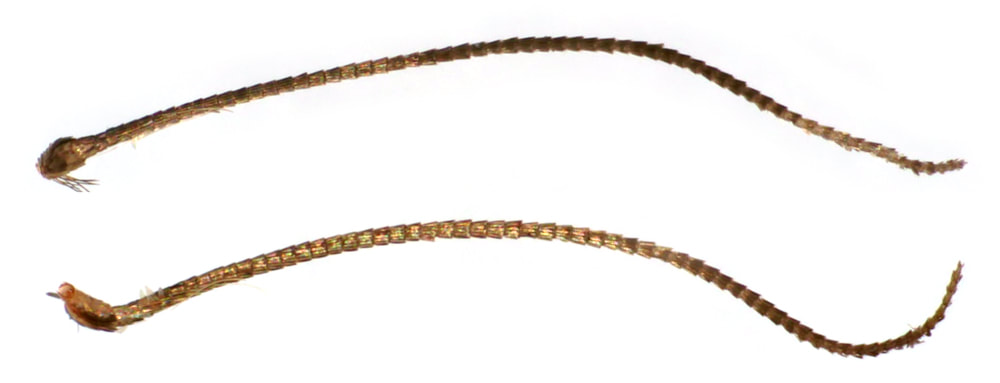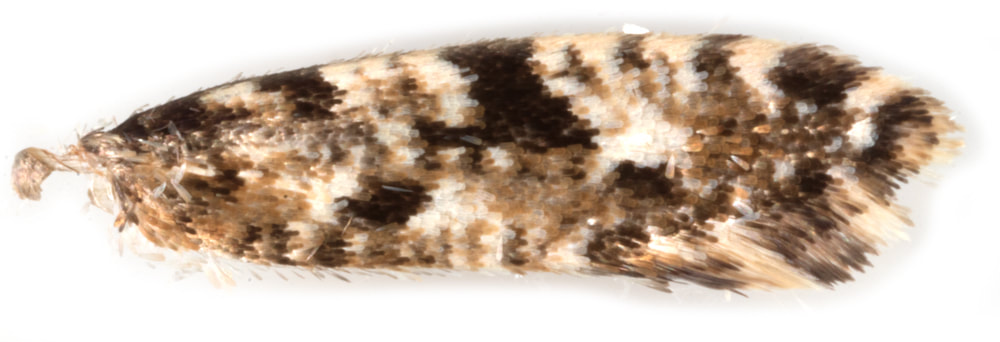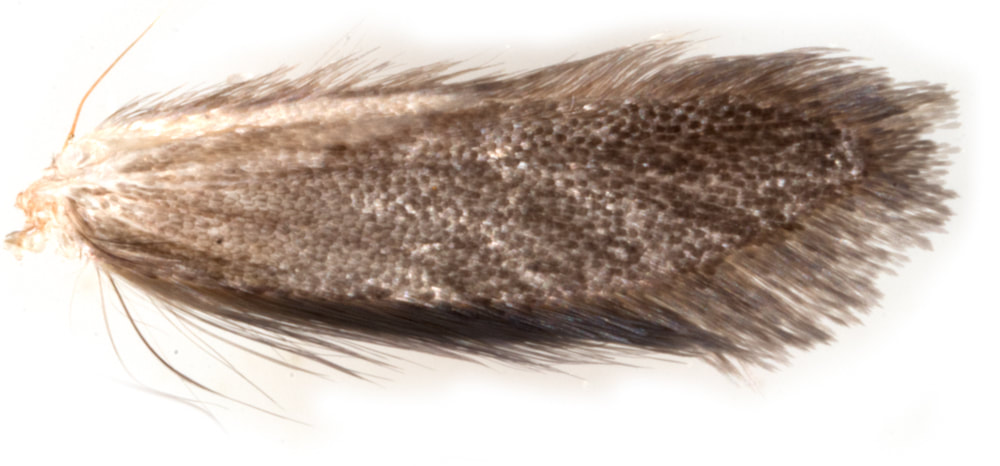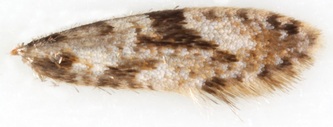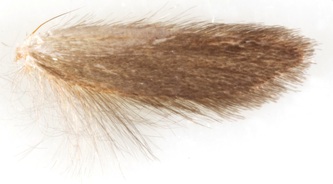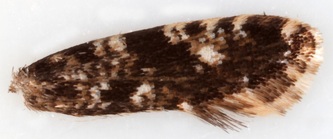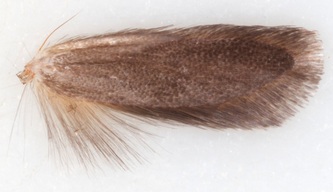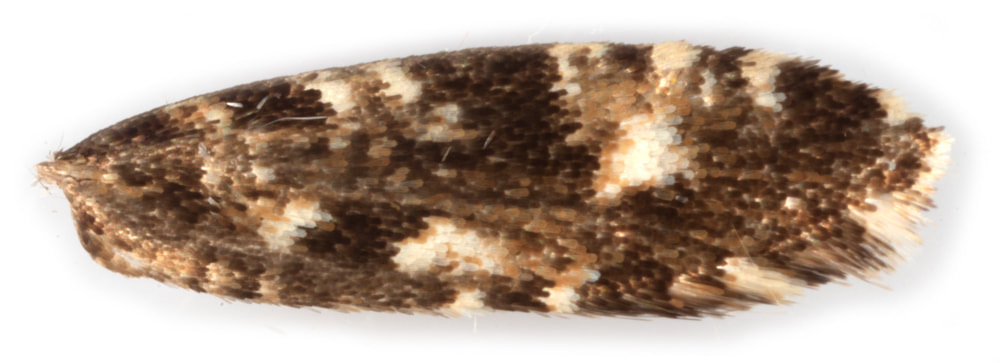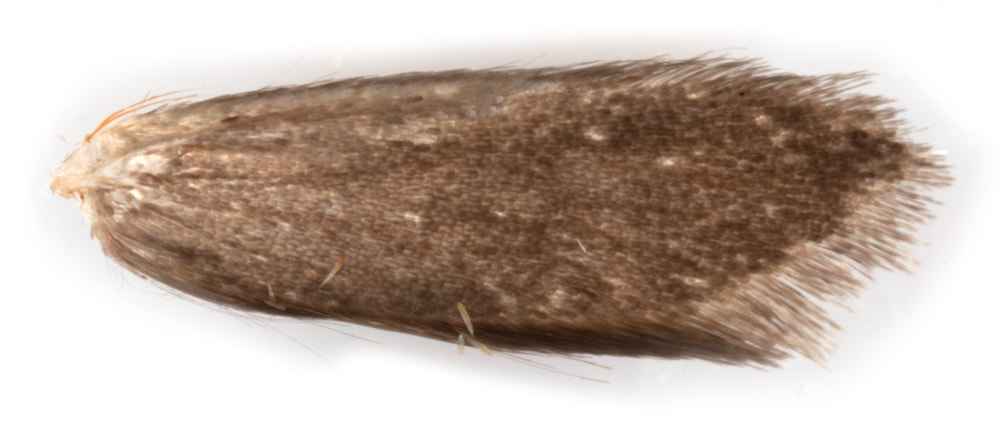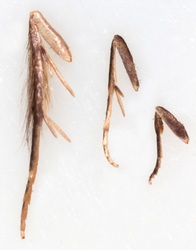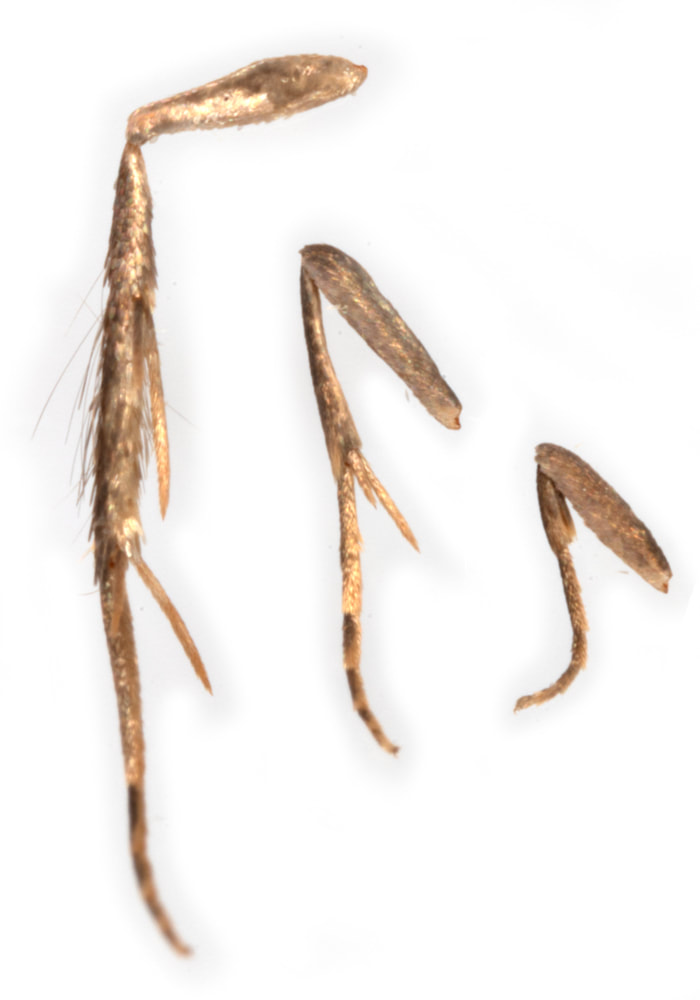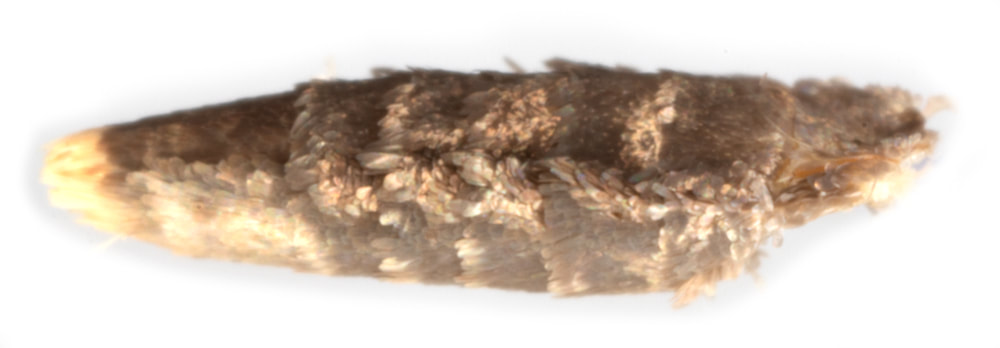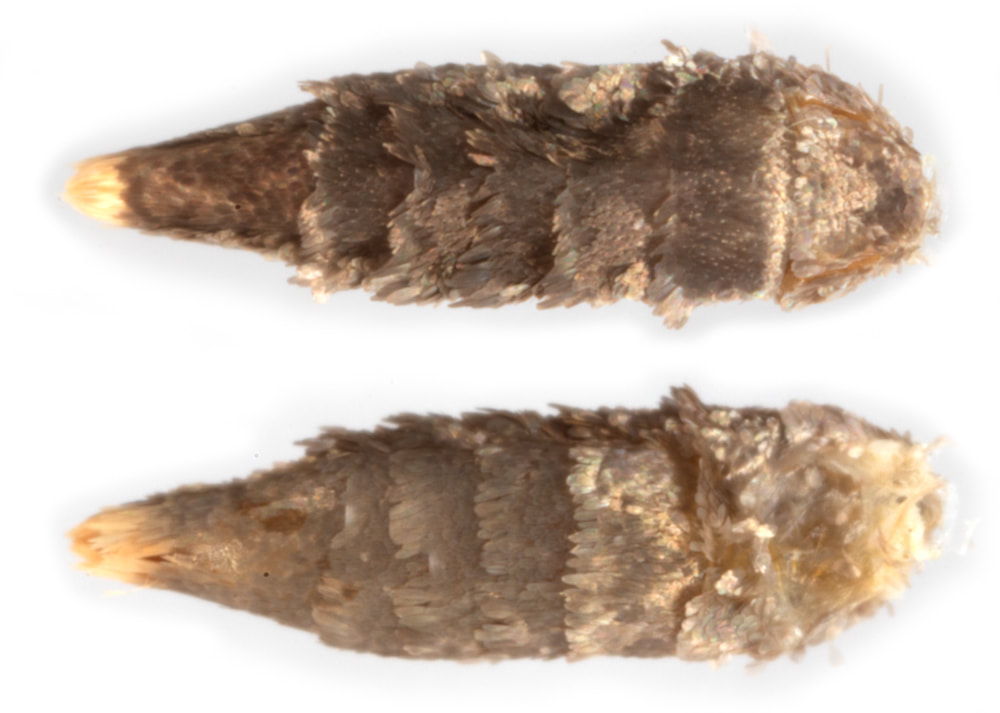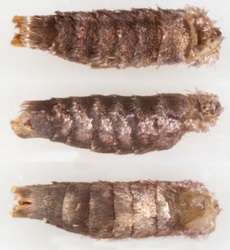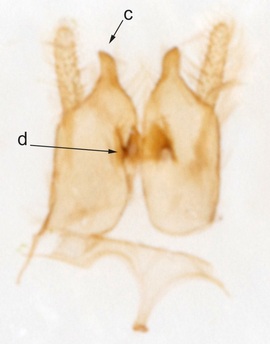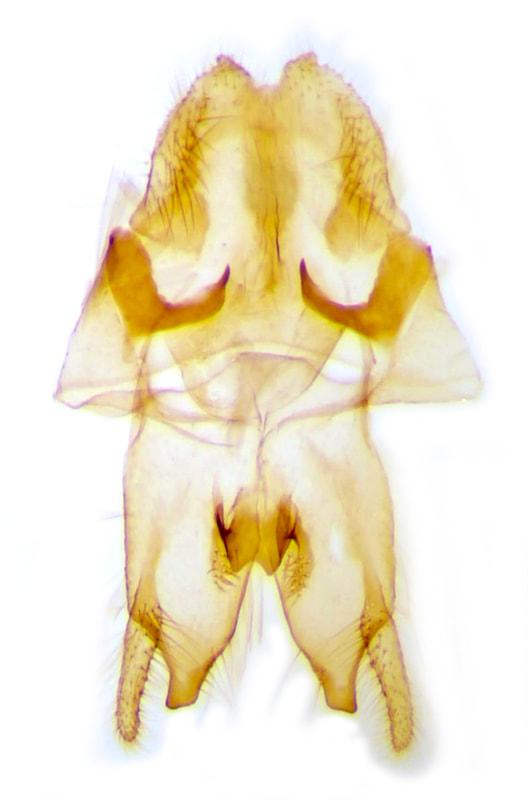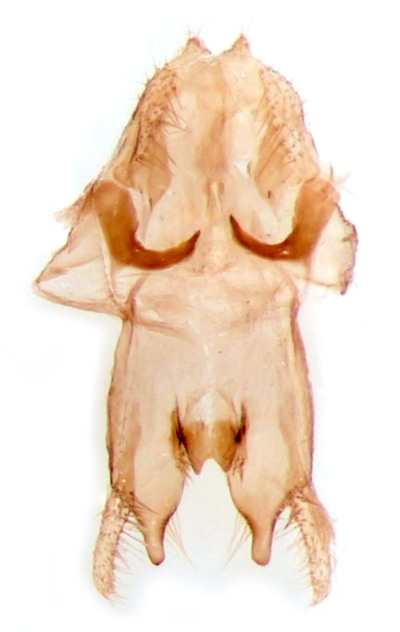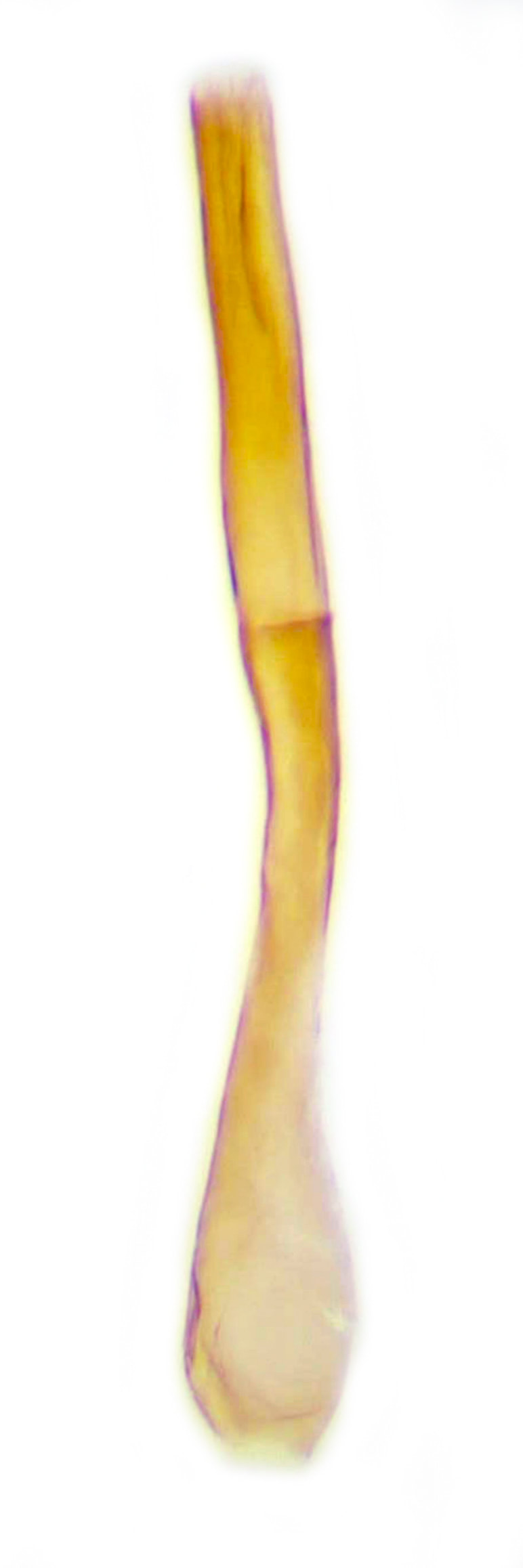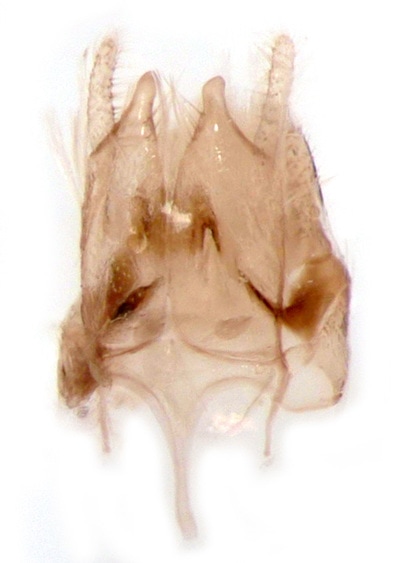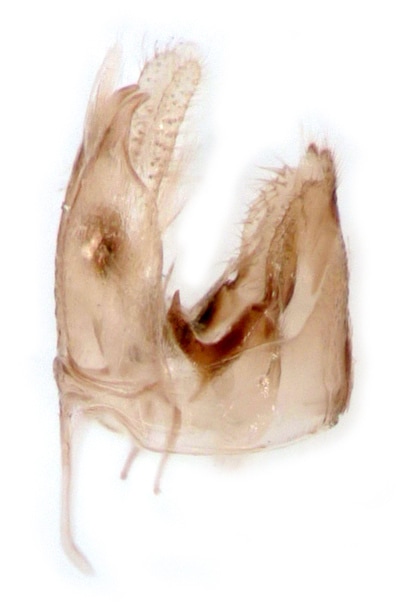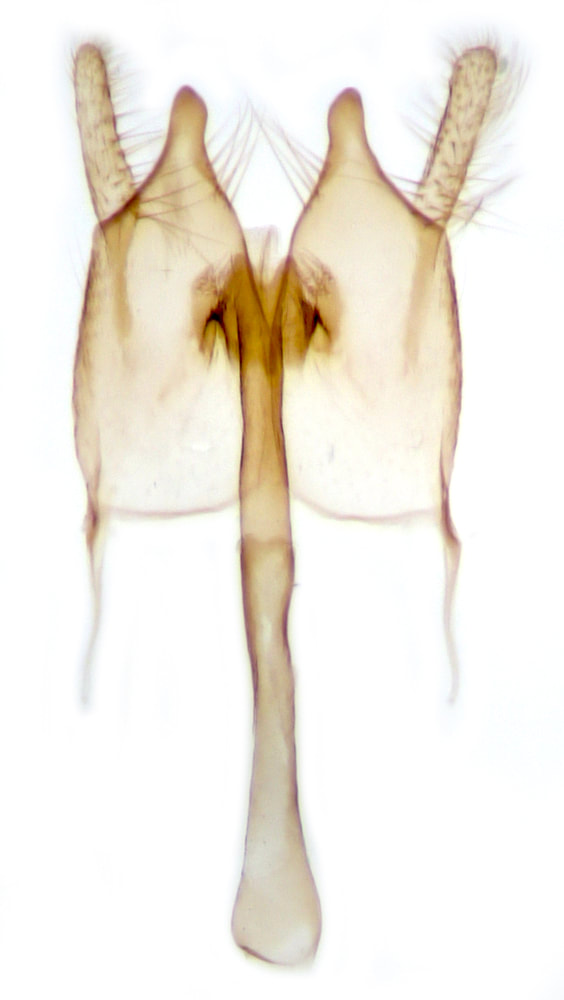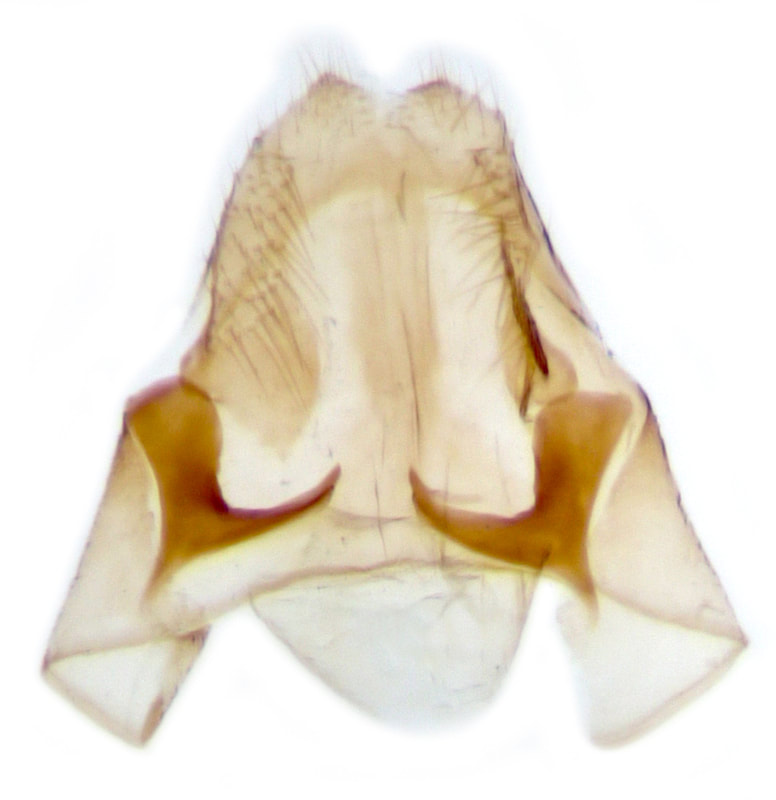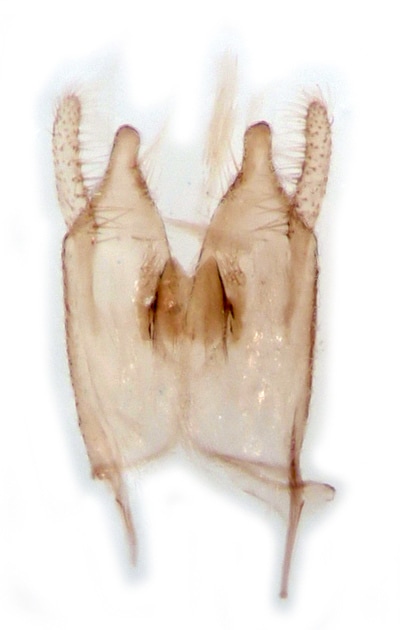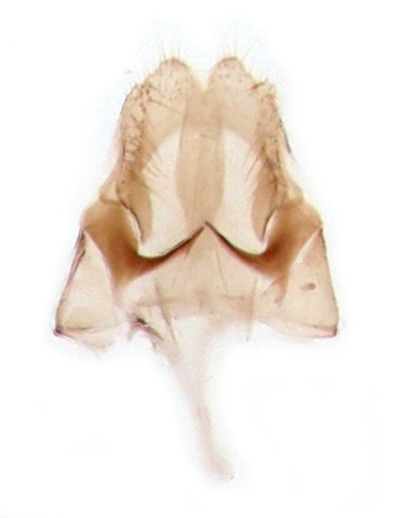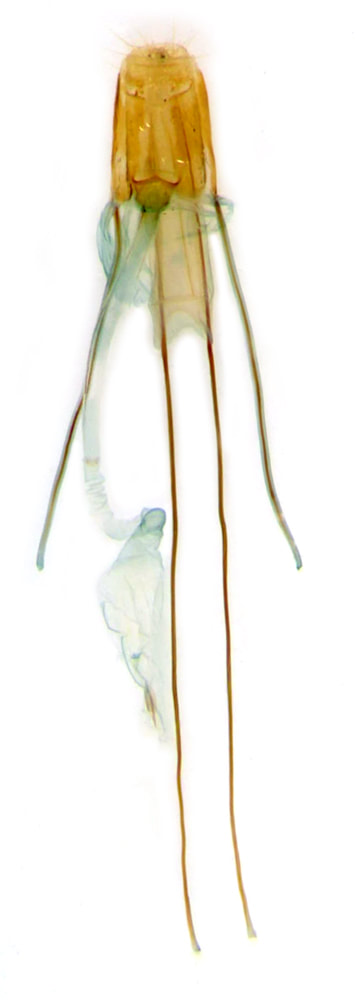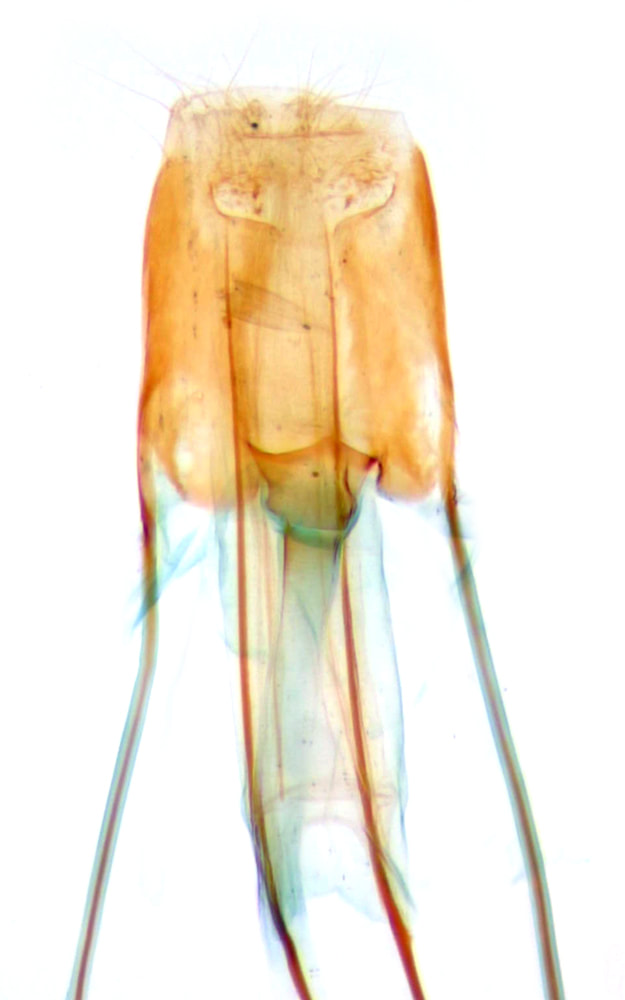12.016 Nemapogon cloacella (Cork Moth)
ws:10-18mm; May-Sep; fly in early morning sun & late afternoon to dusk, common throughout UK especially in woodland.
ID: According to MBGBI2, N.cloacella has an anvil-shaped dark mark on the costa at 1/2. In N.koenigi the ground colour is more uniformly dark so that this dark costal mark is not clearly defined. On this basis I was expecting specimen §5 to be N.koenigi - however, it has proved on genital dissection to be N.cloacella - suggesting to me that these species may not be reliably separable on external characteristics.
Male genitalia: N.cloacella and N.koenigi, and other Nemapogon species are figured in MBGBI2 and there are images at Moth Dissection group. I will only consider N.cloacella vs N.koenigi here. In MBGBI2 they are said to be distinguished by "the shape of the gnathos arms" - other than that no description is offered. I propose 4 consistent differences on the basis of the figures and images and my own N.cloacella material:
A: The gnathos arm is angular with a lateral section in the long axis of the genitalia and a transverse medial section and a short projection at the "elbow" where these two components meet. In N.cloacella the medial section is slightly shorter than the lateral section; and the medial section shows a distinct kink posteriorly towards the apex. In N.koenigi the medial section is distinctly longer than the lateral section; and the medial section is smoothly curved towards the apex.
B: Folds at the lateral margins of the tegumen are much "fuller" in N.cloacella.
C: In N.cloacella the apex of the sacculus is obliquely truncate with the lateral margin extending further than the medial margin. In N.koenigi the sacculus is evenly rounded.
D: In N.cloacella the juxta has a medial notch, while in N.koenigi it is evenly domed.
There are probably also differences in the aedeagus, but the drawings in MBGBI2 are not fully consistent with the images I have obtained for N.cloacella.
Female genitalia: Illustrated in MBGBI2 (p176) and shown at Moth Dissection, but neither source clearly describes or indicates the key distinguishing features. The main differences illustrated in MBGBI2 are:
A. shape of the sterigma - elongate in N.cloacella, quadrate in N.koenigi
B. a central protrusion of the ventral margin of the ostium in N.cloacella, this being transverse without a central protrusion in N.koenigi. This differences is also indicated with an arrow in a Moth Dissection image of N.cloacella, however one of the images of N.koenigi at Moth Dissection also shows a central protrusion, casting some doubt on the validity of this feature for distinguishing the species
Male genitalia: N.cloacella and N.koenigi, and other Nemapogon species are figured in MBGBI2 and there are images at Moth Dissection group. I will only consider N.cloacella vs N.koenigi here. In MBGBI2 they are said to be distinguished by "the shape of the gnathos arms" - other than that no description is offered. I propose 4 consistent differences on the basis of the figures and images and my own N.cloacella material:
A: The gnathos arm is angular with a lateral section in the long axis of the genitalia and a transverse medial section and a short projection at the "elbow" where these two components meet. In N.cloacella the medial section is slightly shorter than the lateral section; and the medial section shows a distinct kink posteriorly towards the apex. In N.koenigi the medial section is distinctly longer than the lateral section; and the medial section is smoothly curved towards the apex.
B: Folds at the lateral margins of the tegumen are much "fuller" in N.cloacella.
C: In N.cloacella the apex of the sacculus is obliquely truncate with the lateral margin extending further than the medial margin. In N.koenigi the sacculus is evenly rounded.
D: In N.cloacella the juxta has a medial notch, while in N.koenigi it is evenly domed.
There are probably also differences in the aedeagus, but the drawings in MBGBI2 are not fully consistent with the images I have obtained for N.cloacella.
Female genitalia: Illustrated in MBGBI2 (p176) and shown at Moth Dissection, but neither source clearly describes or indicates the key distinguishing features. The main differences illustrated in MBGBI2 are:
A. shape of the sterigma - elongate in N.cloacella, quadrate in N.koenigi
B. a central protrusion of the ventral margin of the ostium in N.cloacella, this being transverse without a central protrusion in N.koenigi. This differences is also indicated with an arrow in a Moth Dissection image of N.cloacella, however one of the images of N.koenigi at Moth Dissection also shows a central protrusion, casting some doubt on the validity of this feature for distinguishing the species
|
§1 Hockley woods, Essex; 15/05/2008; male; fw 5.6mm
§2 Westcliff-on-sea, Essex; 05/06/2010; male; fw 6.0mm §3 Strumpshaw Fen, Norfolk; 14/07/2008; male; fw 6.7mm §4 Nethybridge, Inverness-shire; 12/07/2011; male §5 Strumpshaw Fen, Norfolk; 28/05/2012; male; fw 6.7mm §6 Romansleigh, Devon; 25/06/2016; male; fw 5.0mm §7 New Forest, Hampshire; 17/06/2016; male; fw 5.5mm §8 Bampton Grange, Cumbria; 10/06/2018; male; fw 5.7mm §9 Bampton Grange, Cumbria; 14/06/2019; female; fw 6.8mm All images © Chris Lewis |
§10 Pound Wood, Essex; 23/05/2019
§11 Orlestone Forest, Kent; 18/05/2020 §12 Pound Wood, Essex; 15/06/2020; male; fw 5.7mm §13 ??; 2020; male §14 Pound Wood, Essex; 07/06/2022; male; fw 6.6mm §15 Pound Wood, Essex; 07/06/2022; male |
Page published Feb 2011 | §4 added 19/12/2011 | §5 and ID section added 26/06/2012 | §6 added 06/04/2017 | §7 added 29/05/2017 |
§8 added 14/03/2019 | §9 and female genitalia text added 22/01/2020 | §10 added 12/02/2020 | §11 added 17/01/2021 |
§12 added 23/01/2021 | §13 added 10/04/2021 | §14&15 added 02/10/2022 | text amended 28/06/2023
§8 added 14/03/2019 | §9 and female genitalia text added 22/01/2020 | §10 added 12/02/2020 | §11 added 17/01/2021 |
§12 added 23/01/2021 | §13 added 10/04/2021 | §14&15 added 02/10/2022 | text amended 28/06/2023
